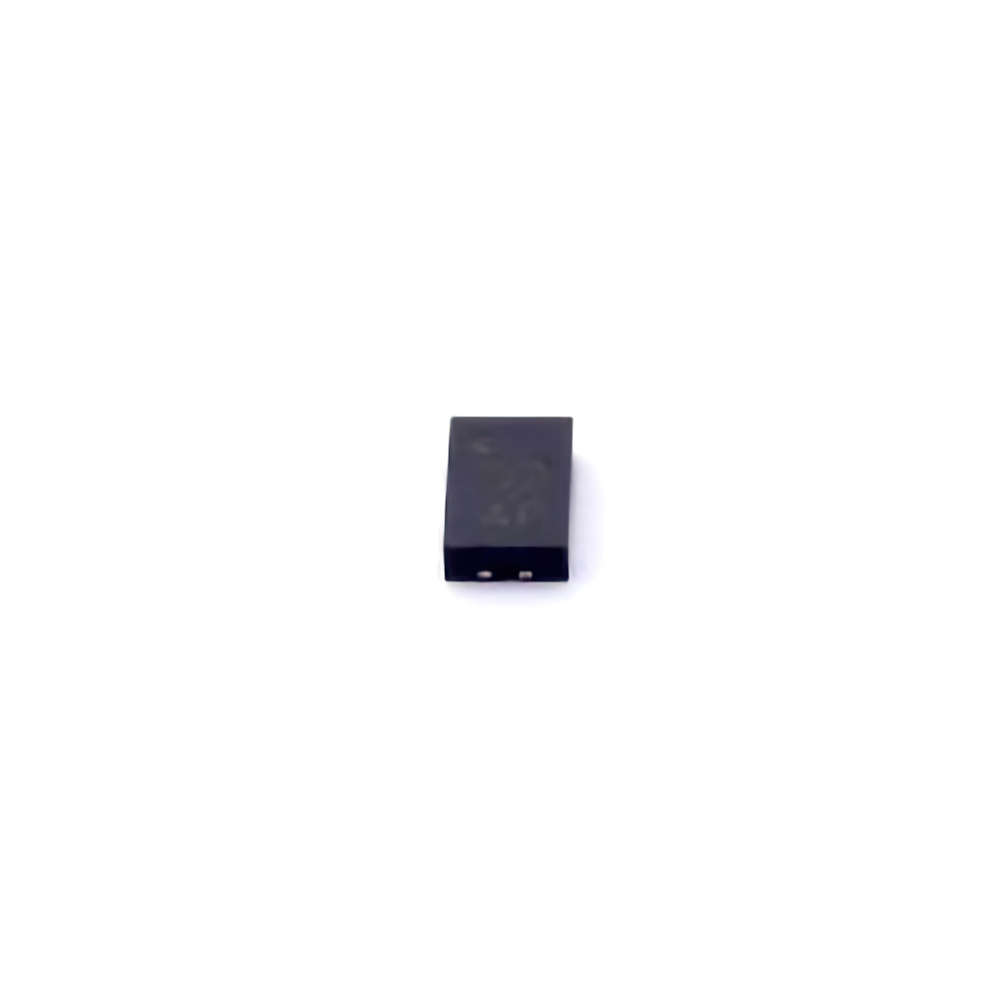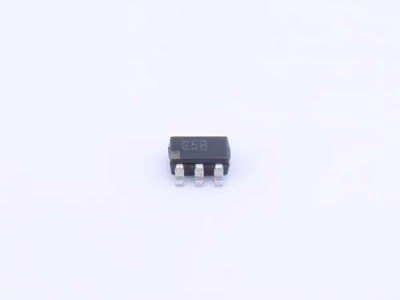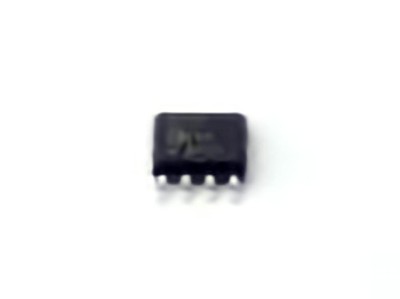
The AD8319ACPZ is a high-pe RF ormance, single-supply logarithmic amplifier from Analog Devices, commonly used in RF applications for measuring signal strength and converting a wide dynamic range of input signals to a logarithmic output. This article provides in-depth insights into the common troubleshooting issues faced with the AD8319ACPZ and offers practical solutions to resolve them. Whether you are an engineer designing an RF circuit or a technician debugging a system, this guide will help you identify and solve common problems effectively.
AD8319ACPZ, troubleshooting, logarithmic amplifier, RF systems, signal strength, analog devices, amplifier issues, troubleshooting solutions, common errors, technical support, signal measurement, circuit design
Understanding the AD8319ACPZ and Its Common Problems
The ADI AD8319ACPZ from Analog Devices is a popular logarithmic amplifier used in applications where signal strength needs to be measured over a wide dynamic range. This device is commonly employed in radio frequency (RF) systems, wireless communications, and various instrumentation setups. Its ability to convert varying signal strengths into a logarithmic form makes it an essential component in many modern electronic systems.
However, like all sophisticated electronic devices, the AD8319ACPZ may occasionally present challenges during design, integration, or use. Troubleshooting and resolving these issues promptly is critical to ensure optimal performance and minimize downtime. In this section, we will explore some of the most common problems associated with the AD8319ACPZ and provide solutions to help you address them.
1. Incorrect Output Behavior:
One of the most frequent issues with the AD8319ACPZ involves abnormal output readings. The output voltage is supposed to provide a logarithmic representation of the input signal, but sometimes, users report that the output is either stuck at a fixed value or fluctuating erratically.
Possible Causes:
Overdriven Input: The AD8319ACPZ can handle a wide range of input signals, but if the input exceeds the device’s rated maximum, the output might saturate or behave unpredictably.
Improper Grounding or Noise: Any issues related to grounding or excessive noise on the Power supply line can distort the output. RF systems are particularly susceptible to noise, which can impact the accuracy of measurements.
Incorrect Load Impedance: The device requires a specific load impedance (typically 10kΩ or higher) for optimal performance. Using a lower load impedance may distort the output.
Solutions:
Verify Input Signal Range: Ensure the input signal is within the specified range of the AD8319ACPZ (typically 0.1 µV to 2 V RMS). Use an attenuator if necessary to reduce the signal level.
Check Grounding: Use proper grounding techniques, especially in high-frequency designs. Ensure that the ground plane is solid and continuous, and keep sensitive analog signals away from noisy digital traces.
Adjust Load Impedance: Check that the load impedance is within the recommended range, and ensure there is no excessive current drawn from the output.
2. Inaccurate Gain Control:
The AD8319ACPZ features a programmable gain control (PGC) that allows users to adjust the amplification factor. If the gain control is not functioning properly, it may lead to inaccurate signal measurements.
Possible Causes:
Incorrect Control Voltage: The PGC operates based on a control voltage. If this voltage is too low or too high, the gain will not be correctly adjusted, leading to incorrect output readings.
Power Supply Instability: A fluctuating or noisy power supply can affect the PGC functionality, causing inconsistent output levels.
Temperature Variations: The performance of the PGC can be affected by temperature changes. A high temperature may alter the control voltage and cause non-linear behavior.
Solutions:
Check PGC Control Voltage: Ensure that the voltage applied to the PGC pin is within the recommended range (typically between 0 and 3.3V). Use a voltage regulator if necessary to stabilize this voltage.
Verify Power Supply Integrity: Use a stable, low-noise power supply. Consider using filtering Capacitors to reduce any noise or ripple from the power source.
Monitor Temperature: Ensure that the device operates within its specified temperature range. If necessary, implement thermal management strategies like heatsinks or thermal vias.
3. Power Supply Issues:
Power supply problems can lead to various malfunctions in the AD8319ACPZ, including unexpected output behavior, instability, or failure to function altogether.
Possible Causes:
Insufficient Power Supply: The AD8319ACPZ requires a specific voltage for proper operation. An insufficient power supply voltage can prevent the device from functioning correctly.
Power Supply Noise: If the power supply is noisy or unstable, the device may exhibit noise on the output signal, resulting in inaccurate readings.
Current Limiting: If the current supplied to the device is limited or inconsistent, it may not operate at full capacity.
Solutions:
Ensure Proper Voltage: Check that the supply voltage is within the recommended range (typically 2.7V to 5.5V). Use a regulated power supply with adequate current capacity.
Add Decoupling capacitor s: Place decoupling capacitors close to the power pins of the device to filter out high-frequency noise and stabilize the power supply.
Use a High-Quality Power Source: Consider using a low-noise, precision power supply to minimize power fluctuations.
4. Signal Distortion and Non-linearity:
Signal distortion or non-linearity is another common issue that users face when working with the AD8319ACPZ. The device is designed to operate linearly over a wide range of input signal strengths, but certain conditions can introduce distortion into the output signal.
Possible Causes:
Overloading the Input: If the input signal is too large, it can cause the logarithmic amplifier to saturate, leading to distortion and non-linear output.
Improper Biasing: The input stage of the AD8319ACPZ requires proper biasing to maintain linearity. Incorrect biasing can result in distorted output readings.
Excessive Harmonics: The presence of harmonics in the input signal, especially in RF applications, can cause non-linear behavior in the output.
Solutions:
Limit Input Signal: Ensure that the input signal is within the device’s operating range. Use a signal attenuator to prevent overloading the input.
Check Biasing: Verify that the device is correctly biased according to the datasheet recommendations. Proper resistor values should be used to set the biasing.
Use Filtering: To reduce the impact of harmonics, implement filtering techniques such as low-pass filters on the input signal to clean up any unwanted high-frequency components.
Advanced Troubleshooting and Preventive Measures
While the issues discussed in Part 1 are some of the most common problems faced by users of the AD8319ACPZ, there are also more advanced troubleshooting techniques and preventive measures that can be taken to ensure long-term reliability and optimal performance. This section will cover some of these advanced solutions, as well as best practices for integrating the AD8319ACPZ into your RF designs.
5. Signal Coupling and Interference Issues:
In complex RF environments, signal coupling and interference can significantly impact the performance of the AD8319ACPZ. Whether through electromagnetic interference ( EMI ) or crosstalk between adjacent circuits, these issues can distort the device’s output and lead to erroneous measurements.
Possible Causes:
Improper Shielding: Lack of proper shielding around the AD8319ACPZ and its associated circuitry can lead to EMI, affecting the accuracy of signal measurement.
Signal Crosstalk: In multi-channel systems, signal crosstalk from adjacent circuits can interfere with the AD8319ACPZ’s input, causing incorrect readings.
Unwanted RF Signals: External RF signals from nearby transmitters or other electronic devices can induce noise on the AD8319ACPZ’s input, distorting the output.
Solutions:
Use Proper Shielding: Enclose the AD8319ACPZ and associated circuitry in a metal shield to reduce EMI. Make sure the shield is properly grounded.
Minimize Crosstalk: In multi-channel systems, ensure that signal paths are well-separated and use adequate decoupling between channels to minimize crosstalk.
Implement RF Filters: Use band-pass filters or low-pass filters to block unwanted RF signals from reaching the input of the AD8319ACPZ.
6. Device Calibration:
To ensure the most accurate and reliable performance, it is crucial to calibrate the AD8319ACPZ periodically. Calibration helps to account for minor variances in the device’s characteristics due to temperature changes, aging, or manufacturing tolerances.
Possible Causes:
Device Drift Over Time: As with most electronic components, the AD8319ACPZ may experience drift in its performance over time, leading to inaccurate measurements.
Temperature Effects: Variations in temperature can shift the device’s characteristics, requiring recalibration to maintain accuracy.
Solutions:
Perform Regular Calibration: Use a reference signal source with known characteristics to calibrate the AD8319ACPZ periodically. This ensures that the output remains accurate across its entire dynamic range.
Use Temperature Compensation: Consider using temperature-compensating resistors or thermally stable components to minimize the impact of temperature fluctuations on device performance.
7. Design Considerations for Enhanced Reliability:
Preventing problems before they arise is often the best approach to troubleshooting. By carefully considering the design aspects of your system and implementing best practices, you can minimize the likelihood of encountering issues with the AD8319ACPZ.
Best Practices:
Use Proper PCB Layout: Ensure that the PCB layout minimizes noise and interference. Keep analog and digital grounds separate, and use a solid ground plane to reduce noise coupling.
Select the Right Components: Use components with tight tolerances and appropriate voltage ratings. This reduces the chances of component failure or instability.
Test Thoroughly: Conduct thorough testing of the system under various operating conditions to ensure that all components, including the AD8319ACPZ, are functioning correctly.
Conclusion:
The AD8319ACPZ is a powerful and versatile logarithmic amplifier that plays a crucial role in many RF systems. While it is generally reliable and robust, like all complex electronic components, it can sometimes exhibit issues that need to be addressed. By understanding the common troubleshooting problems and implementing the solutions outlined in this article, engineers and technicians can ensure that their systems operate smoothly and accurately.
Preventive measures, such as regular calibration, proper grounding, and using high-quality power supplies, can go a long way in preventing many of the issues discussed. With a systematic approach to troubleshooting and design, you can maximize the performance and longevity of the AD8319ACPZ in your RF applications.
If you’re looking for models of commonly used electronic components or more information about AD8319ACPZ datasheets, compile all your procurement and CAD information in one place.
( Partnering with an electronic component supplier) sets your team up for success, ensuring that the design, production and procurement processes are streamlined and error-free. (Contact us) for free today.


